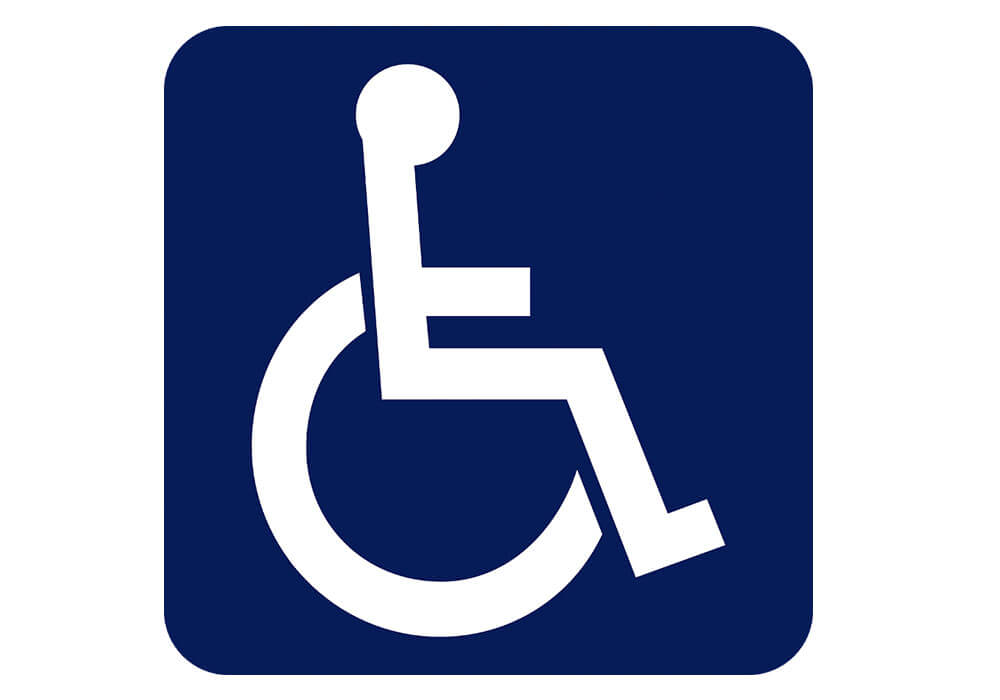Accessibility for people with reduced mobility or hearing or visual impairment is essential when planning any event or congress. It is not just a matter of equality and social justice but also a way to ensure that all participants can fully enjoy the experience and obtain maximum benefit. Below we present some key aspects for assuring event accessibility and how organising companies can make a difference.
- Commitment to accessibility
To ensure that an event is accessible it is vital for the organising company to be firmly committed to accessibility. This involves:
- a) The establishment of reserved spaces that can be accessed by disabled people
It is important for areas used by people with reduced mobility to be free of obstacles and to have clear views at concerts, spectacles and conferences. It is also fundamental to have resources such as induction loops for people with hearing impairment and sign language interpretation services.
- b) Going beyond safety and accessibility regulations
While necessarily complying with current regulations, event organising companies should also make any reasonable changes and adjustments to ensure that the space is more accessible and comfortable for everyone.
- c) Personnel training
Personnel in charge of the organisation and contact with participants should be properly trained to deal with the specific needs of the disabled, providing personalised quality service.
- Design and arrangement of the space
The design and arrangement of the space where the event will be held is crucial for ensuring accessibility. Some aspects to consider include:
- a) Clear and accessible signage
Adequate signage should be placed at accesses and along routes to follow, keeping passageways clear and with corridors as wide as possible to facilitate the movement of all participants.
- b) Access to the stage
It is vital to foresee easy access to the stage and to ensure equal conditions at presiding tables for speakers, directors or active participants in an event who are affected by any disability.
- c) Height-adjustable lecterns
Automatic height-adjustable lecterns are an effective solution to meet the needs of speakers and lecturers, including those who use wheelchairs.
- Communication and promotion of the event
Accessibility does not just involve adaptation of the physical space but also communication and promotion of the event. Some aspects to bear in mind are:
- a) Accessible information
All information concerning the event, including invitations, the programme and support materials, should be accessible and available in adapted formats such as braille or audio.
- b) Promotion of accessibility
It is important when promoting an event to highlight the implemented accessibility measures so that the disabled feel welcome and know that their needs have been considered.
- c) Registration management
The registration process should be accessible and allow participants to provide information about their specific needs so that organisers can properly plan the necessary resources and adaptations.
- Additional resources and services
Depending on the kind of event and the participants’ needs, it is possible that additional resources and services will be required to ensure accessibility. Some examples include:
- a) Support personnel
It is vital to have qualified support personnel on hand, either volunteers or professionals, to help people with disabilities during the event.
- b) Sign language interpretation
The presence of sign language interpreters is essential so that people with hearing impairment can follow an event’s sessions or ceremonies.
- c) Assistance technology
The use of assistance technologies such as induction loops for people with hearing impairment or screen amplification systems for people with visual impairment can make a major difference in the experience of participants.
- Evaluation and continual improvement
Accessibility at events should be a constant concern and a continual improvement process. To achieve this, it is important to:
- a) Implement evaluation systems
It is vital to have evaluation systems that can measure the level of accessibility at events and detect areas for improvement.
- b) Gather feedback from participants
It is important to give the disabled a voice and gather their opinions and suggestions to improve accessibility at future events.
- c) Keep up with new developments and trends in accessibility
Organising companies should keep themselves informed about the latest developments and trends in accessibility so they can implement innovative and effective solutions at their events.
- Collaboration with entities and experts on accessibility
Collaboration with entities and experts on accessibility is essential to ensure that events are truly inclusive. This involves:
- a) Consulting with organisations and experts
It is important to work together with organisations and experts on accessibility such as ONCE to ensure that best practices are implemented and that the needs of the disabled are adequately met.
- b) Participating in specialised events and training
Organising companies should participate in events and training specialising in accessibility to learn from the experience of other professionals and bring their knowledge up to date.
- c) Promote awareness and training in accessibility
It is fundamental to promote awareness about the importance of accessibility and to develop training in this area among sector professionals.
- Accessibility at virtual and hybrid events
Virtual and hybrid events are increasingly popular, so it is therefore vital to ensure accessibility in those formats. Some aspects to consider include:
- a) Accessible platforms and tools
It is important to choose platforms and tools that are accessible and allow people with disabilities to fully participate in the virtual or hybrid event.
- b) Audio descriptions and subtitles
For virtual events it is vital to have audio descriptions and subtitles to facilitate access by people with visual or hearing impairment.
- c) Flexible participation
Virtual and hybrid events should offer flexible participation so that the disabled can adjust their experience in accordance with their needs and preferences.
- Social responsibility and reputation
Accessibility at events is not just a matter of equality and justice but also a key aspect in the organising companies’ social responsibility and reputation. Some benefits include:
- a) Improved corporate image
Attention paid to accessibility at events can help improve an organising company’s corporate image and position it as a reference in the sector.
- b) Appeal to a wider public
An accessible event will attract a broader and more diverse public, which can improve the experience of all participants and enrich debate and the exchange of ideas.
- c) Compliance with legislation
Implementing accessibility measures at events can ensure compliance with legislation on equality and non-discrimination, avoiding eventual penalties or lawsuits.
- Financial benefits
Accessibility at events can also generate financial benefits for organising companies and participants. Some examples include:
- a) More people attending
An accessible event can attract more people, which means more income from tickets, sponsorship and other aspects.
- b) Customer loyalty
Disabled people who have enjoyed an accessible and well-organised event are more likely to attend future events of the same organising company.
- c) Saving of costs due to later adjustments
By foreseeing and adequately planning accessibility at events, organising companies can avoid additional costs derived from subsequent adjustments or last-minute solutions.
- Conclusions
Accessibility at events is a priority that should be approached on an integral basis, involving all actors in the sector. Collaboration, training and continual improvement are keys to ensuring that events are inclusive and accessible for everyone, regardless of their capacities. Organising companies have the responsibility and opportunity to make a difference and help build a more fair and egalitarian society.





